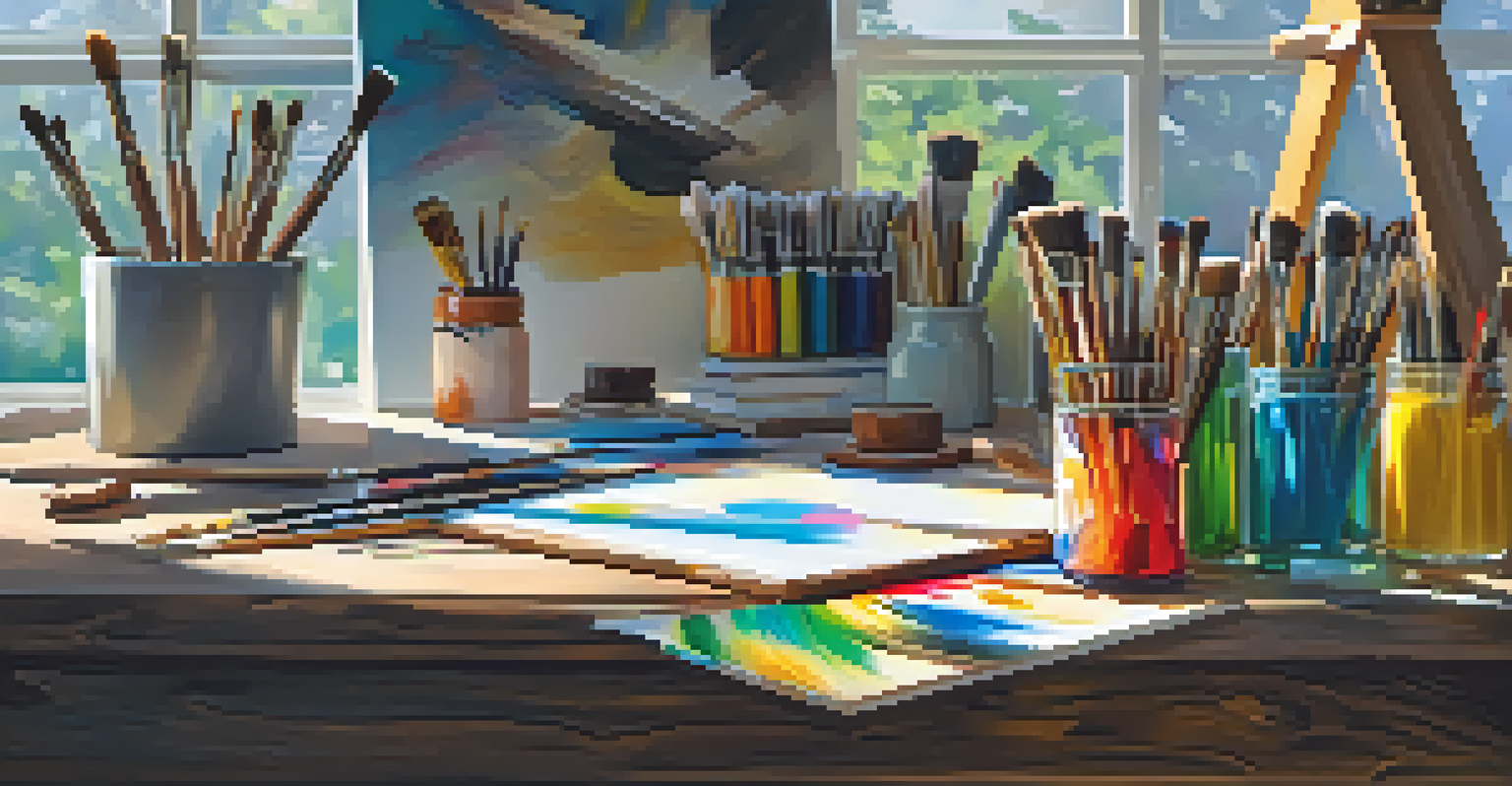Creating an Eye-Catching Portfolio Homepage

Understand Your Audience to Tailor Your Design
Before jumping into design, it's crucial to know who your audience is. Are they potential clients, employers, or collaborators? Understanding their needs and preferences will help you create a homepage that speaks directly to them.
Design is not just what it looks like and feels like. Design is how it works.
Think about what makes your audience tick. For instance, a graphic designer targeting startups might want a clean, modern look, while a photographer might prefer bold visuals that showcase their work. This alignment ensures that your portfolio resonates with viewers.
Ultimately, a tailored design not only attracts attention but also builds a connection, making visitors more likely to explore your portfolio further.
Choose a Clean and Intuitive Layout
When it comes to layout, less is often more. A clean, organized structure helps visitors navigate your homepage easily. Think of it as inviting someone into your home; you want them to feel comfortable and know where to go.

Consider using a grid layout or a card system to present your work. This way, each project has its own space, making it easier for viewers to focus on what you’ve done. Remember, clutter can distract from your talent and creativity.
Know Your Audience for Success
Understanding your audience's needs and preferences is essential for creating a portfolio that resonates with them.
An intuitive layout not only enhances user experience but also encourages visitors to spend more time on your site, increasing the chances they'll reach out for your services.
Utilize Striking Visuals to Capture Attention
Visuals are the heart of any portfolio, serving as a direct representation of your skills. High-quality images or videos of your work can instantly grab attention and engage visitors. Think of your homepage as a gallery; every piece should shine.
Your portfolio is a reflection of your skills, so make it a masterpiece.
Consider using a hero image or a video background that reflects your style. This can set the tone for your portfolio and leave a lasting impression. Just ensure that the visuals don’t overpower your content; balance is key.
Remember, your visuals should not only showcase your work but also tell a story about who you are as a creator. This narrative helps potential clients or employers connect with you on a deeper level.
Craft Compelling Copy That Reflects Your Brand
While visuals are crucial, the right words can elevate your portfolio. Compelling copy should succinctly describe your work and provide context. Think of it as a friendly guide that walks visitors through your projects and achievements.
Use an authentic tone that reflects your personality and brand values. Avoid overly technical jargon unless necessary, and if you use it, be sure to explain it. This approach ensures your portfolio is accessible to a wider audience.
Keep Your Design Clean and Simple
A clean and intuitive layout enhances user experience, making it easier for visitors to navigate your portfolio.
Incorporating storytelling elements can also enhance your copy. Share anecdotes about your creative process or the challenges you overcame, making your portfolio not just a showcase, but an engaging narrative.
Include Clear Calls to Action Throughout
A portfolio homepage isn't just about showcasing your work; it's also about guiding visitors to next steps. Clear calls to action (CTAs) can help direct potential clients or employers to contact you, view your work, or follow you on social media.
Position these CTAs strategically throughout your homepage. For example, after showcasing a project, invite visitors to learn more about your process or to reach out for collaborations. This encourages interaction and keeps visitors engaged.
Remember, a well-placed CTA can make all the difference in converting curious visitors into potential clients, so don’t overlook their importance.
Optimize for Mobile Devices for Wider Reach
In today's digital age, many users access websites via mobile devices. Therefore, optimizing your portfolio homepage for mobile is essential. A responsive design ensures that your work looks great on any screen size, from desktops to smartphones.
Consider how your layout, visuals, and text will adapt on smaller screens. Elements that work well on a computer may not translate effectively to mobile. Test your site on different devices to ensure a seamless experience.
Regular Updates Maintain Relevance
Consistently updating your portfolio showcases your latest work and signals to potential clients that you are active in your field.
By prioritizing mobile optimization, you not only enhance user experience but also widen your reach, making it easier for potential clients to connect with you, no matter where they are.
Regularly Update Your Portfolio to Stay Current
An eye-catching portfolio is not a one-time creation; it requires regular updates to remain relevant. As you complete new projects or acquire new skills, be sure to refresh your homepage to showcase the best of what you have to offer.
Consider setting a schedule for updates, whether it's quarterly or bi-annually. This practice not only keeps your portfolio current but also signals to potential clients that you are active and engaged in your field.

Additionally, removing older or less relevant work can help you maintain a focused presentation that highlights your best skills and projects, making your portfolio even more compelling.
Gather Feedback to Continuously Improve Your Portfolio
Feedback is a valuable tool for growth, especially when it comes to your portfolio. Share your homepage with trusted colleagues, mentors, or friends and ask for their honest opinions. Fresh eyes can often spot areas for improvement that you might overlook.
Consider implementing feedback to enhance various aspects of your homepage, from design elements to content clarity. This iterative process can lead to a more polished and effective portfolio over time.
Remember, creating an eye-catching portfolio is an ongoing journey. Embrace feedback as a way to refine your presentation and ensure it remains a true reflection of your evolving skills and style.